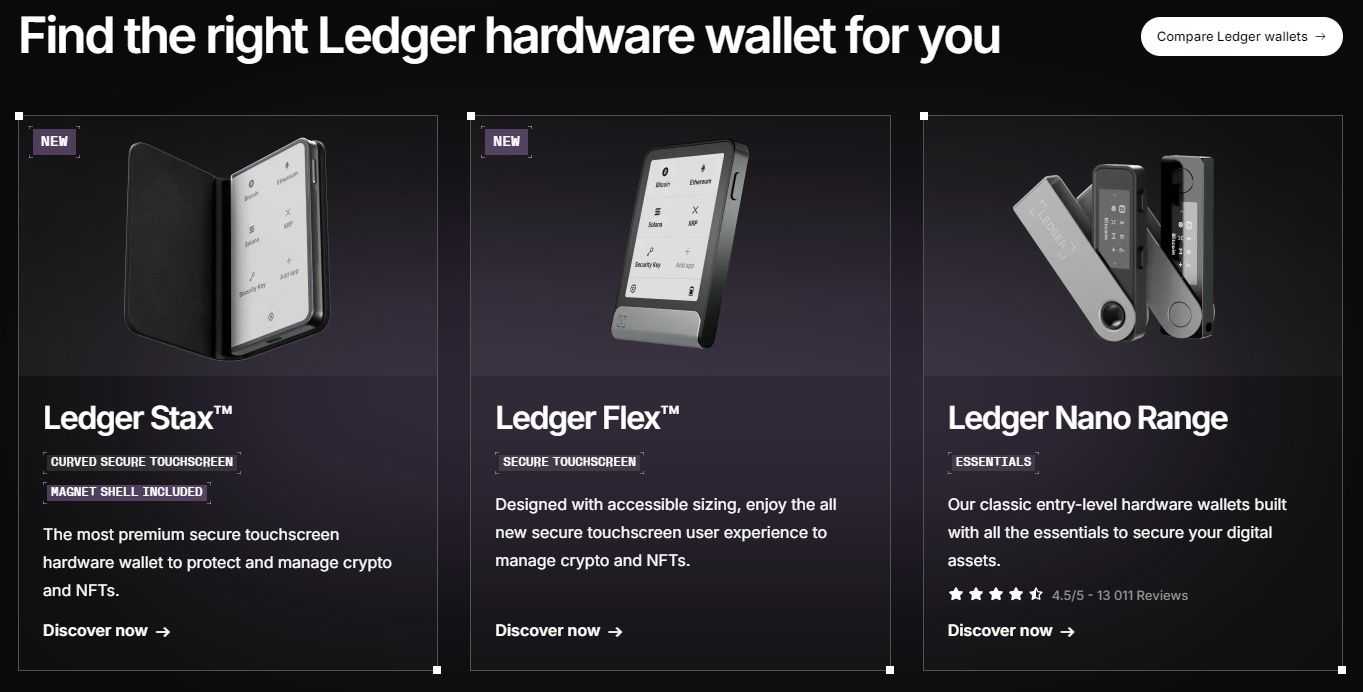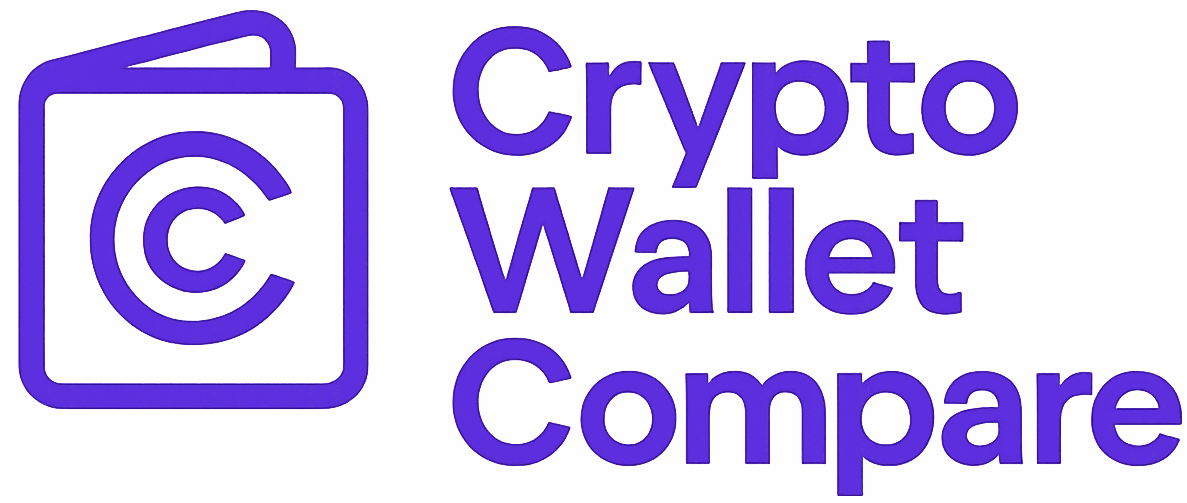Wireless hardware wallets are no longer just a futuristic concept – in 2025, they’re the new standard. The Trezor Safe 7 and Ledger Stax lead the pack, each bringing a fresh spin to crypto security, connectivity, and user experience. If you’re deciding between these two flagships, you’re not alone. Both have made waves with their latest iterations, but their approaches to wireless tech, display innovation, and security architecture are distinct.

Design and Display: Touchscreens Take Center Stage
The visual leap in hardware wallets is striking this year. The Trezor Safe 7 opts for a vibrant color LCD touchscreen that feels instantly familiar if you’ve used any modern gadget. It’s built for clarity when reviewing addresses or confirming transactions. In contrast, Ledger Stax makes a statement with its curved 3.7-inch E Ink® touchscreen. This isn’t just about looks – the E Ink display sips power and lets users personalize their lock screen with NFT art or favorite images.
If aesthetics matter to you (and let’s be honest, why shouldn’t they when you’re spending hundreds?), the tactile feel of both devices is a big upgrade from previous generations. Ledger Stax’s screen is larger and curves around the edge – it’s almost like holding an e-reader in your palm. Trezor Safe 7 keeps things compact but intuitive, focusing on practical navigation over flash.
Wireless Connectivity and Charging: Going Truly Cordless
The days of being tethered to your laptop by a USB cable are fading fast. Both wallets now support Bluetooth for seamless pairing with mobile devices. The Trezor Safe 7 uses its own Trezor Host Protocol (THP) encryption over Bluetooth, aiming to balance convenience with privacy – something open-source enthusiasts will appreciate.
Charging goes wireless too: Trezor Safe 7 supports Qi2 magnetic charging (and includes a magnetic charger in the box), while Ledger Stax sticks with standard Qi wireless charging (charger not included). This may seem minor until you realize how often you’ll want to top up your wallet without hunting for cables or adapters.
| Trezor Safe 7 | Ledger Stax | |
|---|---|---|
| Display | Color LCD touchscreen | Curved E Ink® touchscreen (3.7″) |
| Connectivity | USB-C, Bluetooth (THP encrypted) | USB-C, Bluetooth 5.2, NFC |
| Wireless Charging | Qi2 magnetic (charger included) | Qi standard (charger not included) |
| Battery | 330mAh LiFePO₄ (long-life) |
200mAh lithium-ion (up to 10 hrs active use) |
| Price | €249 | $399 |
Batteries and Longevity: Who Wins on Endurance?
This generation finally treats battery life as more than an afterthought. The Trezor Safe 7 packs a robust 330mAh LiFePO₄ battery, promising years of charge cycles without noticeable degradation – ideal if you plan on storing assets long-term or don’t want to worry about battery replacements down the road.
The Ledger Stax comes equipped with a 200mAh lithium-ion battery. Its super-efficient E Ink display means it can show your chosen lock screen image for months even when powered off completely – but expect about ten hours of active use per charge or roughly 150 transactions before topping up again.
A Quick Look at Supported Assets and Security Features
If portfolio diversity is your thing, take note: Ledger Stax supports over 5,500 cryptocurrencies and NFTs directly via Ledger Live, while Trezor Safe 7 offers support for more than 1,200 coins but relies on third-party integrations for NFT and staking functionality.
The security debate remains fierce in crypto circles. The Trezor Safe 7 debuts as Trezor’s first quantum-ready wallet thanks to its dual-chip design (TROPIC01 and EAL6 and element). Meanwhile, Ledger Stax continues its tradition of using Secure Element chips (EAL5 and certified) that isolate private keys from software layers entirely.
For users weighing open-source transparency against proprietary security, this is where philosophies truly diverge. Trezor’s firmware and hardware remain auditable by the community, appealing to those who want to verify every line of code and trust in post-quantum upgradeability. Ledger leans into its Secure Element’s proven tamper resistance and a more curated, app-like experience within Ledger Live.
Everyday Experience: Who Should Choose Which?
Let’s cut through the specs: which wallet actually fits your lifestyle? If you’re a collector or DeFi enthusiast juggling dozens of tokens, the Ledger Stax’s massive coin support and native NFT management are hard to beat. The E Ink display isn’t just about looks, it’s functional for reviewing transactions in bright sunlight or saving battery on days you forget to charge.
On the other hand, if you’re privacy-focused or want maximum transparency, Trezor Safe 7 is a compelling choice. The inclusion of Qi2 magnetic charging (with charger included) is a thoughtful touch for anyone tired of accessory upsells. And if you’re thinking long-term, as in post-quantum security, Safe 7’s dual-chip design and open-source ethos tip the scales for future-proofing.
Price Check: Value for Money in 2025
Let’s talk numbers. The Trezor Safe 7 comes in at €249, making it the more budget-friendly option for most European buyers (and still competitive globally). Ledger Stax lands at $399, positioning itself as a premium device for those who want bleeding-edge visuals, broadest asset support, and NFC integration.
Is that price difference justified? If your portfolio includes thousands of tokens or you value seamless NFT management natively within your wallet app, Ledger Stax earns its premium. But if security transparency and battery longevity are top priorities, or you simply want a wireless charger included out-of-the-box, Trezor Safe 7 delivers serious value.
Trezor Safe 7 vs Ledger Stax: Wireless Hardware Wallet Comparison (2025)
| Feature | Trezor Safe 7 | Ledger Stax |
|---|---|---|
| Wireless Features | USB-C, Bluetooth (THP encryption), Qi2 magnetic wireless charging (magnetic charger included) | USB-C, Bluetooth 5.2, NFC, Qi wireless charging (charger not included) |
| Battery Life | 330mAh LiFePO₄ battery (long-lasting, retains power for years) | 200mAh lithium-ion battery (up to 10 hours active use, ~150 transactions/charge, E-Ink lock screen lasts months) |
| Coin Support | 1,200+ cryptocurrencies (NFT/staking via third-party integrations) | 5,500+ cryptocurrencies, NFTs, and DeFi tokens (direct via Ledger Live) |
| Security Certifications | Dual-chip: auditable TROPIC01 + EAL6+ element; quantum-ready, post-quantum updateable | Secure Element (CC EAL5+ certified), private keys isolated from OS |
| Price | 249 euros | $399 |
Final Takeaways: What Matters Most in Your Next Wallet?
The Trezor Safe 7 vs Ledger Stax debate isn’t about right or wrong; it’s about what matters most to you. If you prize open-source verification, quantum-readiness, and hassle-free charging at a lower price point, Trezor Safe 7 is an easy recommendation. If your crypto life revolves around asset diversity, integrated NFT/DeFi tools, and gorgeous on-device visuals (and you don’t mind paying extra), Ledger Stax stands alone at the top end.
No matter which path you choose in this wireless hardware wallet comparison, both devices represent how far crypto security has come since USB sticks ruled the scene. For deeper dives into specific models or visual comparisons between these two flagships and others like Nano Gen5 or Nano X, check out our dedicated guides such as Ledger Nano Gen5 vs Trezor Safe 7.




